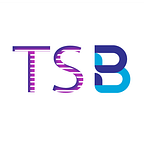How can Blockchain help in tackling human trafficking? (Part 34)
Welcome to the 34th part of the 100-part series on Blockchain.
Our I.D. cards, passports, driver’s licenses, birth certificates, and social security cards are the documents that work as proof that we exist. These are the documents that allow us to attend a school, get medical insurance, get jobs, cross borders, and visit other countries. According to the World Bank, there are around 1 billion people in the world who live but don’t exist in any system and don’t have a valid ID to prove their existence. And shockingly, this number of 1 billion is only an understated estimate. The exact stats about this unregistered population is unknown even today.
Of these 1 billion, nearly half of the population is below the age of 18. These people are flesh and blood, living and breathing, but according to our global system, they don’t even exist. Without an identity, these people are unable to travel legally, are unable to get an education, and are even robbed of their right to life and freedom.
Because of this very reason, human trafficking and prostitution have thrived primarily in the third-world and war-torn countries because of the weak legislative laws, unsecured borders, and deep-rooted corruption. In such scenarios, human traffickers can easily use fake identification documents to transport undocumented young people across borders for forced participation in illegal activities like sex trade, labor, illegal human organ trade, begging, drug supply, etc. Trafficking generates illegal profits of $150 billion a year, with about 40 million people estimated to be its victims.
Blockchain-The solution
Blockchain can provide a solution to curb this menace of human trafficking. In this proposed system, a person’s identity needs to be created on the Blockchain platform using his/her biometric information such as fingerprint or iris scan. This information on Blockchain can not be forged or tampered with. The distributed ledger of Blockchain aims to store the digital identity of every individual along with the information of their relatives. Identification of individuals is always at the heart of the solution. By digitally storing identities on a blockchain, it will significantly be easier for international law enforcement agencies and governments to catch traffickers.
Collected fingerprints or facial scans, which would be impossible to fake, would stop traffickers from making false documents of their victims. Blockchain will ensure that no human is taken out of his home country using fake ID documents produced by human traffickers.
United Nations (UN), in partnership with World Identity Network (WIN), has taken an initiative to end child trafficking using Blockchain technology. The goal is to maintain a digital database of children, which can not be tampered with or hacked into, and make all children visible by providing them with an identity. In this proposed system, the digital identity of every child will be linked to the information of his parents. This secured data on a shared, immutable digital ledger will make trafficking attempts trackable.
Under this Blockchain project, children trying to exit the country will have to have their eyes or fingerprints scanned, and then a phone alert will be sent to their legal guardians, who will have to approve their border crossing (Fig 56–2). Additionally, when the criminals would try to move children abroad, the action will be recorded on the Blockchain, helping law enforcement agencies to spot patterns to catch these traffickers. Thus Blockchain can be a great tool to address this global issue of human trafficking and potentially save millions of children from becoming its victims.
If you liked this article and want to know more about Blockchain, NFTs, Metaverse, and their applications, click the below link.
Happy learning!
